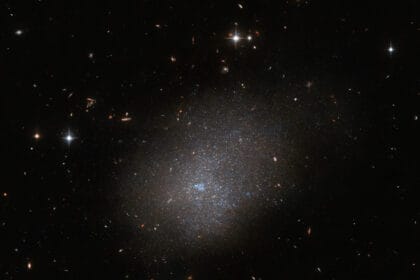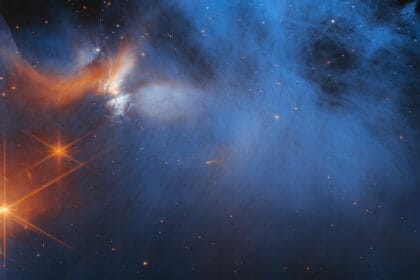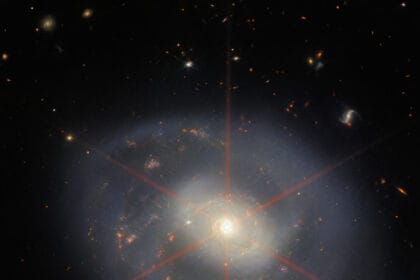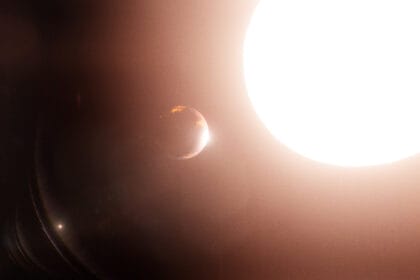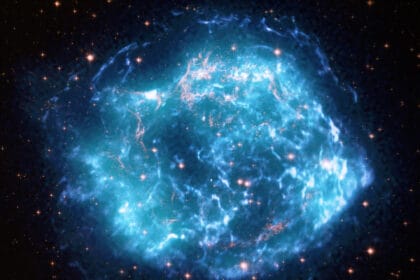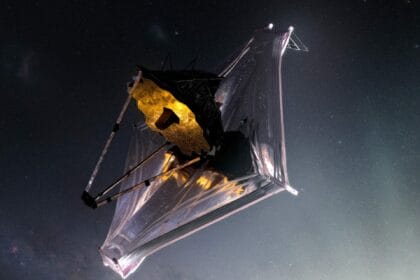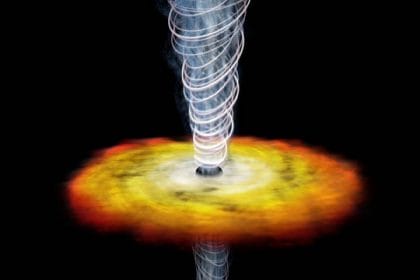Hubble Sees a Sparkling Neighbor Galaxy
The galaxy ESO 300-16 looms over this image from the NASA/ESA Hubble Space…
Webb Unveils Dark Side of Pre-stellar Ice Chemistry
f you want to build a habitable planet, ices are a vital…
Starry Wreath in Pegasus
The James Webb Space Telescope spies the spiral galaxy NGC 7469, located…
Stellar Siblings Host ‘Teenage’ Exoplanets Dicovered by NASA’s TESS
Thanks to data from NASA’s Transiting Exoplanet Survey Satellite (TESS), an international collaboration…
IXPE Measures Exploded Star Remains
When a massive star collapsed in the Cassiopeia constellation, it generated a…
NASA’s Webb Sheds Light on Galaxy Evolution, Black Holes
In an enormous new image, NASA’s James Webb Space Telescope reveals never-before-seen…
Hubble Spots a Merging Galactic Gem
This NASA/ESA Hubble Space Telescope observation has captured the galaxy CGCG 396-2,…
First Images From NASA’s Webb Space Telescope Coming Soon
NASA’s James Webb Space Telescope, a partnership with ESA (European Space Agency)…
Quasars, Mysteries of the Universe
What are Quasars? Let's take a look at the Universe Since the…
